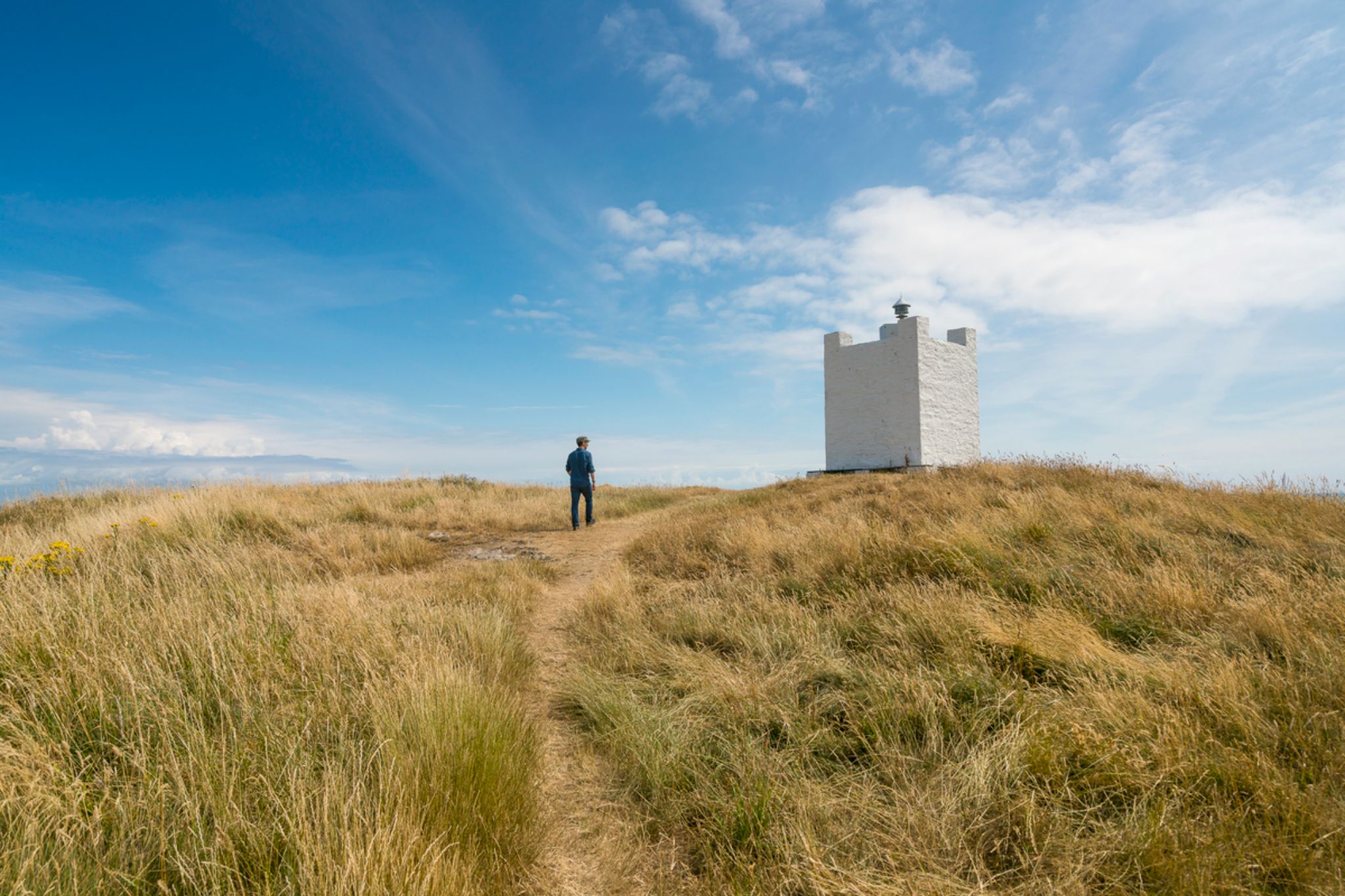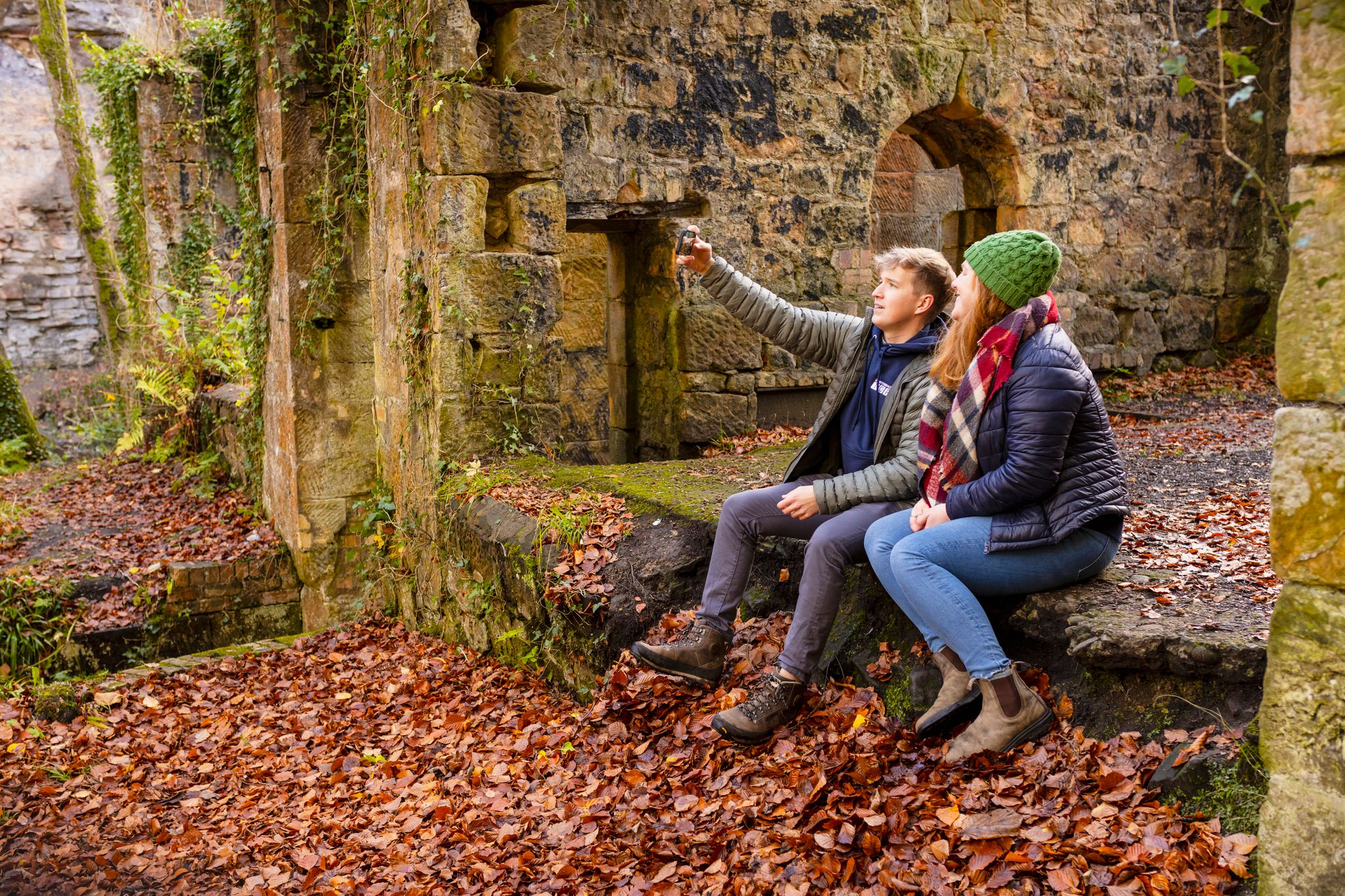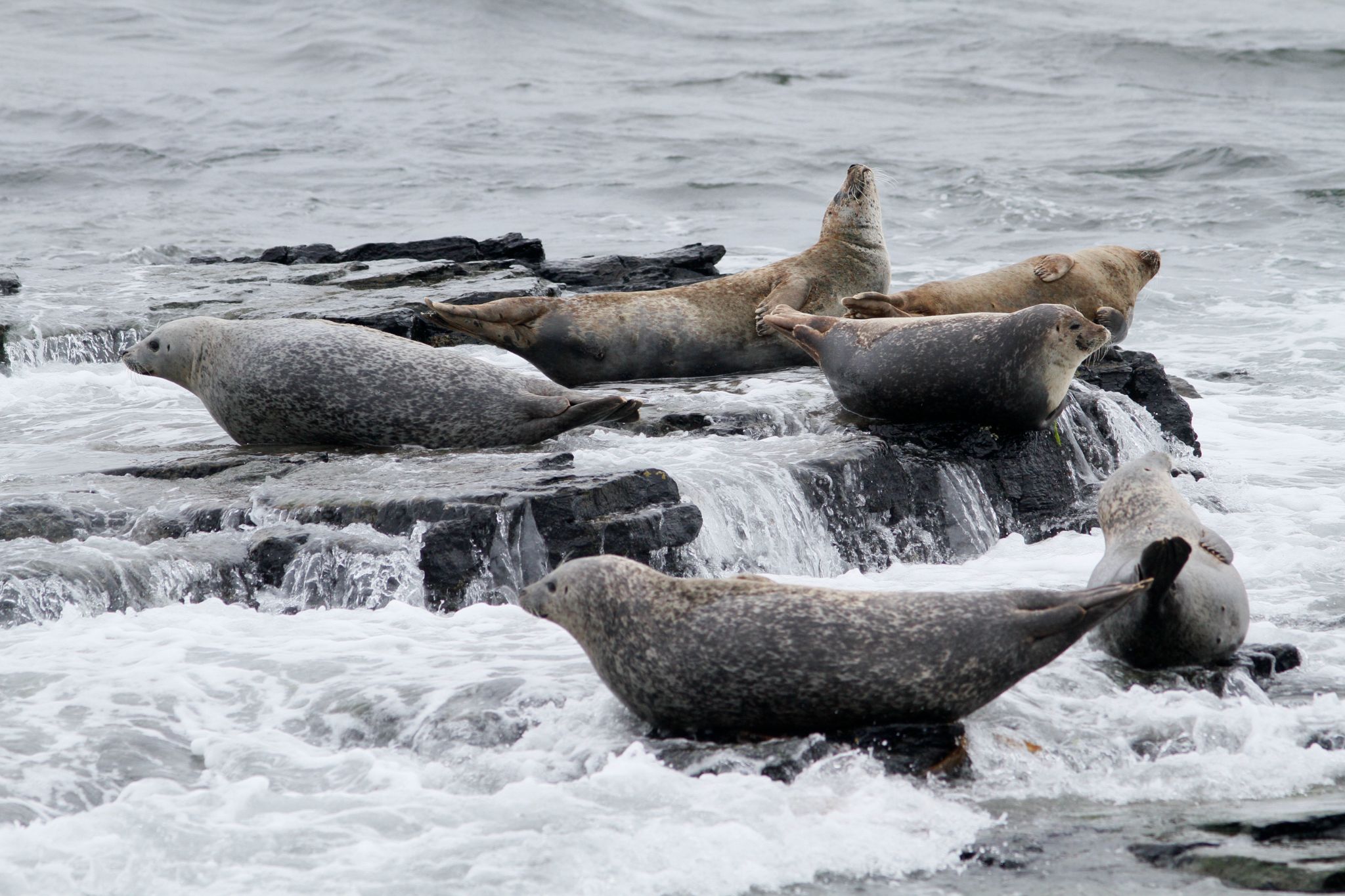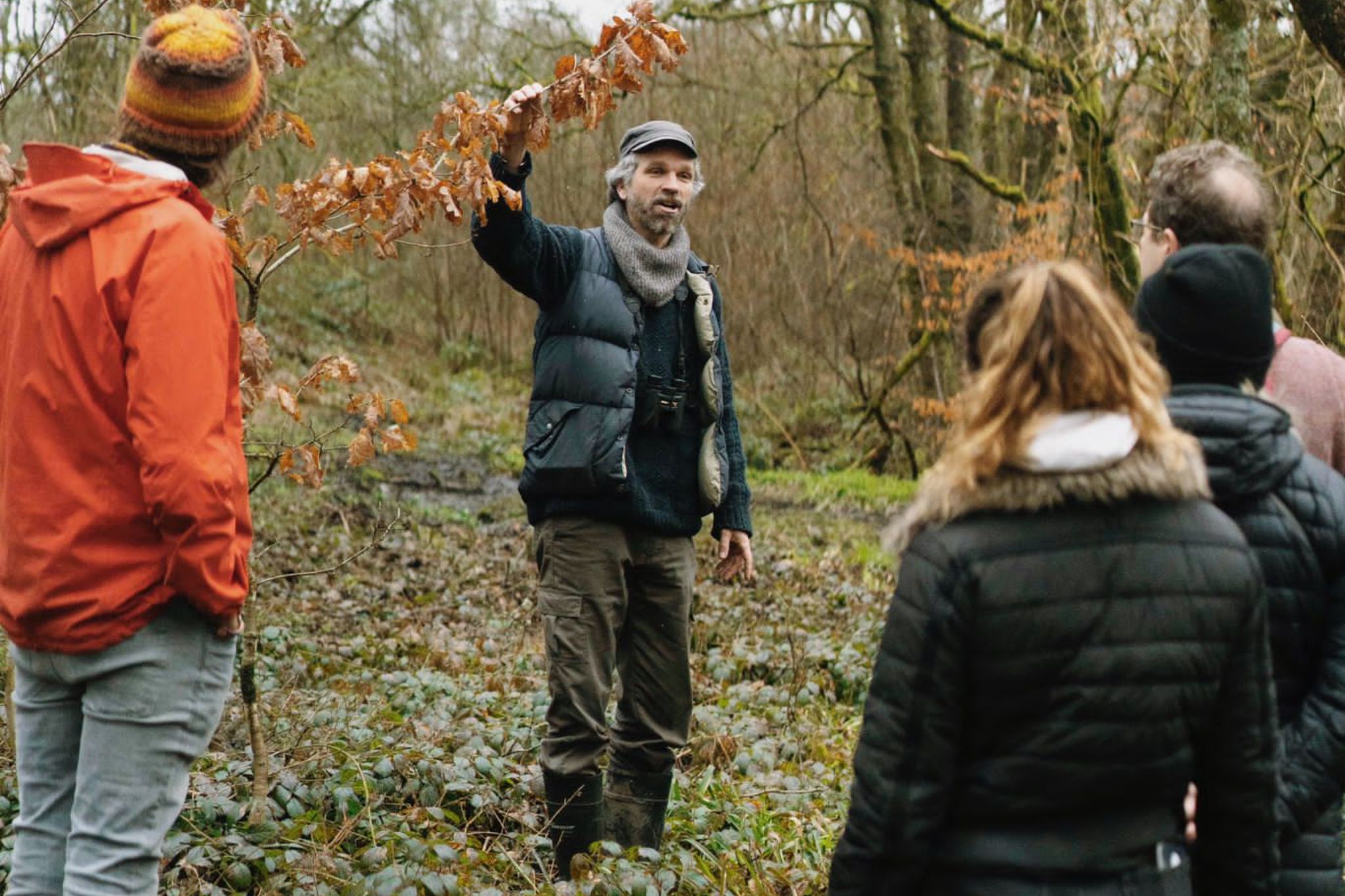
Antoine leading a guided nature tour
© Rachel Shnapp
Whether I’m out scoping a new route for a guided nature tour or talking to landowners and ecologists as part of my work in the Galloway and Southern Ayrshire UNESCO Biosphere’s Nature Recovery team, being and doing things in nature is when I feel my best.
As a Biosphere Guide, I lead groups on walks during which we take a close look at all the creatures, large and small, that surround us. Those we are more or less familiar with, those we know without knowing or we have heard of in song, fairytale or bedtime story. We put faces to names, reconnecting to the natural world through folklore and science.
Wood of Cree RSPB Nature Reserve, Galloway and Southern Ayrshire Biosphere
I love guiding people into the forest. It’s the habitat I know the best, and the one I know most stories about.
ESCAPE TO THE WOODLANDS
There is something reassuring about being surrounded by trees, blanketed by the canopy with tree trunks huddling around. There are some wonderful woodlands in South West Scotland and one of my favourites is the Wood of Cree, north of Newton Stewart, particularly in the autumn.
Autumn is always a fantastic time to visit any woodland. As light levels and temperatures change, a whole host of creatures appear from below the ground. Colourful, strangely shaped and mildly scary to many, mushrooms and toadstools appear everywhere, on soil, on trees dead and alive, or even on each other. Amethyst deceivers, beefsteak fungus, candlesnuff fungus, deadman’s fingers, porcelain fungus… Their names betray our fascination with them.
On my walks I often spy red squirrels scuttling across the paths and trees ahead of me. If you’re quiet enough, you may also be able to spot roe deer too. As dusk falls, you may hear a familiar hoot. October is the best time to hear and spot tawny owls as the young birds are leaving the nest and looking for new territories.
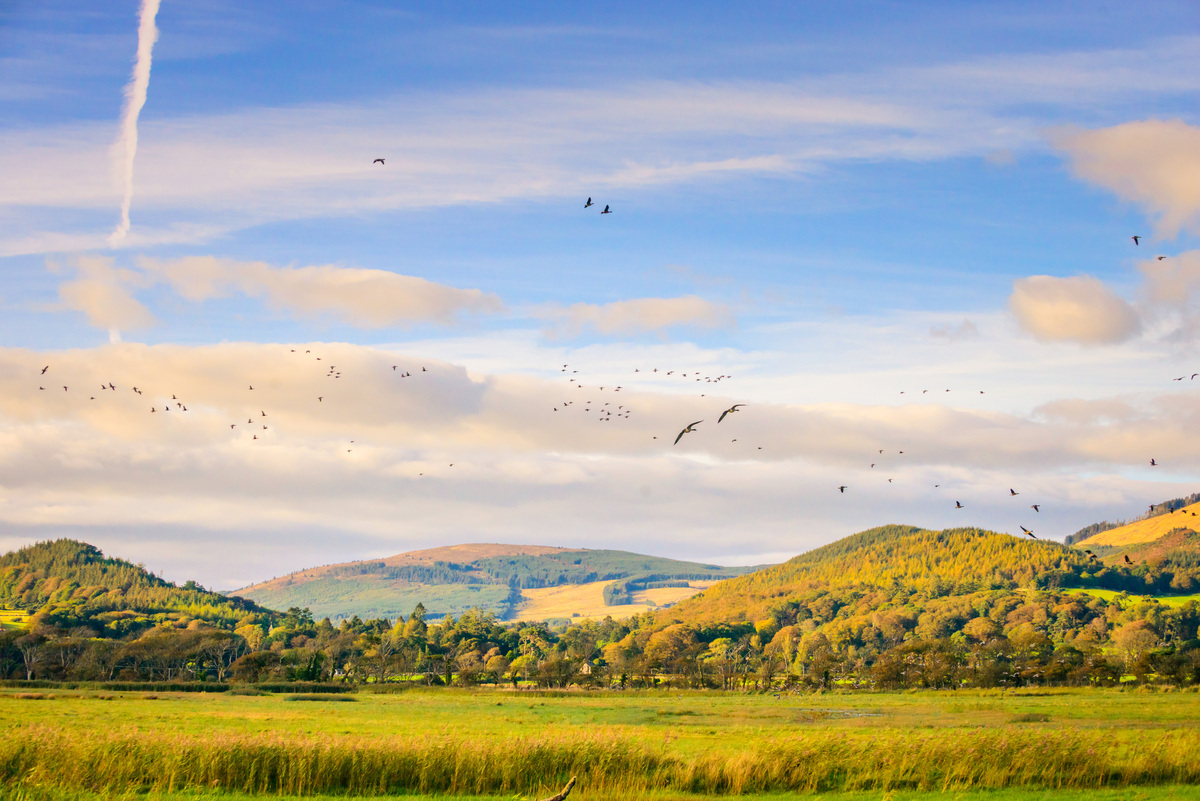
Wild geese at RSPB Mersehead, Dumfries and Galloway
EXPLORE COASTAL HABITATS
As summer ends and the night falls earlier every day, migrating birds leave us for sunnier climes, but others now come to our coasts and hills from their nesting grounds in the Arctic. As sad as I am to see the swifts and swallows go, the overhead squeaking and honking of returning geese always fills me with joy, and the thousands-strong wader murmurations never cease to mesmerise me.
There have been many theories as to where some of these birds disappear to in the winter. It was only at the end of the 19th century that scientists became aware of migration patterns. Wherever they have been, the return of wintering birds in Dumfries & Galloway always makes me feel like I am greeting old friends. Their comings-and-goings mark the seasons, along with falling leaves and pumpkins on doorsteps.
Wild geese have been celebrated throughout human history, and they even have their own festival here in Dumfries & Galloway. The Wild Goose Festival takes place from the 19 – 29 October across the area and coincides with the return of tens of thousands of geese. It’s all about the wild goose over two weeks of walks, talks, folklore and music.
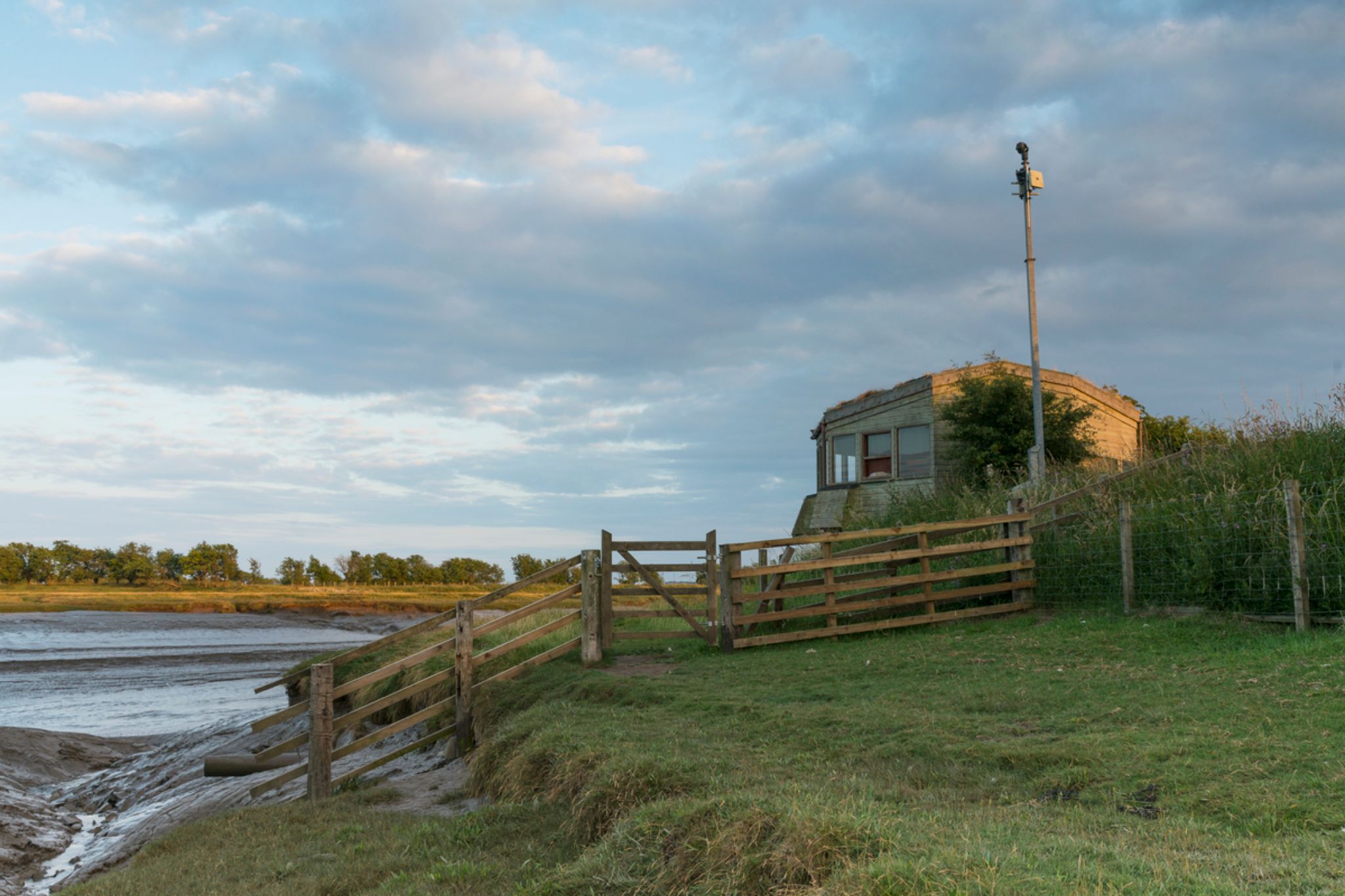
Bird hide at Wigtown Bay Local Nature Reserve
If you’re really keen on seeing the open ocean birds, the trick here is to visit during or right after north-westerly gales, so wrap up and hold on to your hat!
Not only geese but many other bird species visit our shores to escape the harsh Arctic winters, some of which will stay with us for the winter and others continue their journey south. Waders such as golden plovers, lapwings and curlews gather on the coast. The Crook of Baldoon RSPB Reserve, south of Newton Stewart, is a fantastic spot to see them. It’s a good spot for pink-footed geese or even pale bellied Brent geese, which have journeyed all the way from Canada!
This coastal nature reserve is situated near Wigtown and is the perfect place to spot many colourful species. Flocks of redwings and field fares fly in from Scandinavia and gorge on crab apples, hawthorn and rowan berries. If it’s the wetland birds you want to see, it’s best to check the tides and plan your birdwatching visit for when the tide is rising. This way, you will have more chances of spotting the birds as they are pushed in from the mudflats by the rising tide.
For seabirds, head to the Rhins of Galloway. Autumn is the time to see the globe-trotting pelagic birds, the seabirds that spend most of their lives out on the open ocean. At Corsewall Point, at the northern tip of the peninsula, you can spot storm petrels, skuas, shearwaters and Sabine’s gulls. You can reach Corsewall Point lighthouse by car, but there is also a great coastal path leaving from the old RAF Wig Bay Seaplane Base in Kirkcolm. You’ll walk past mudflats full of waders, some woodland with nuthatch and finches, and geese grazing on the fields.
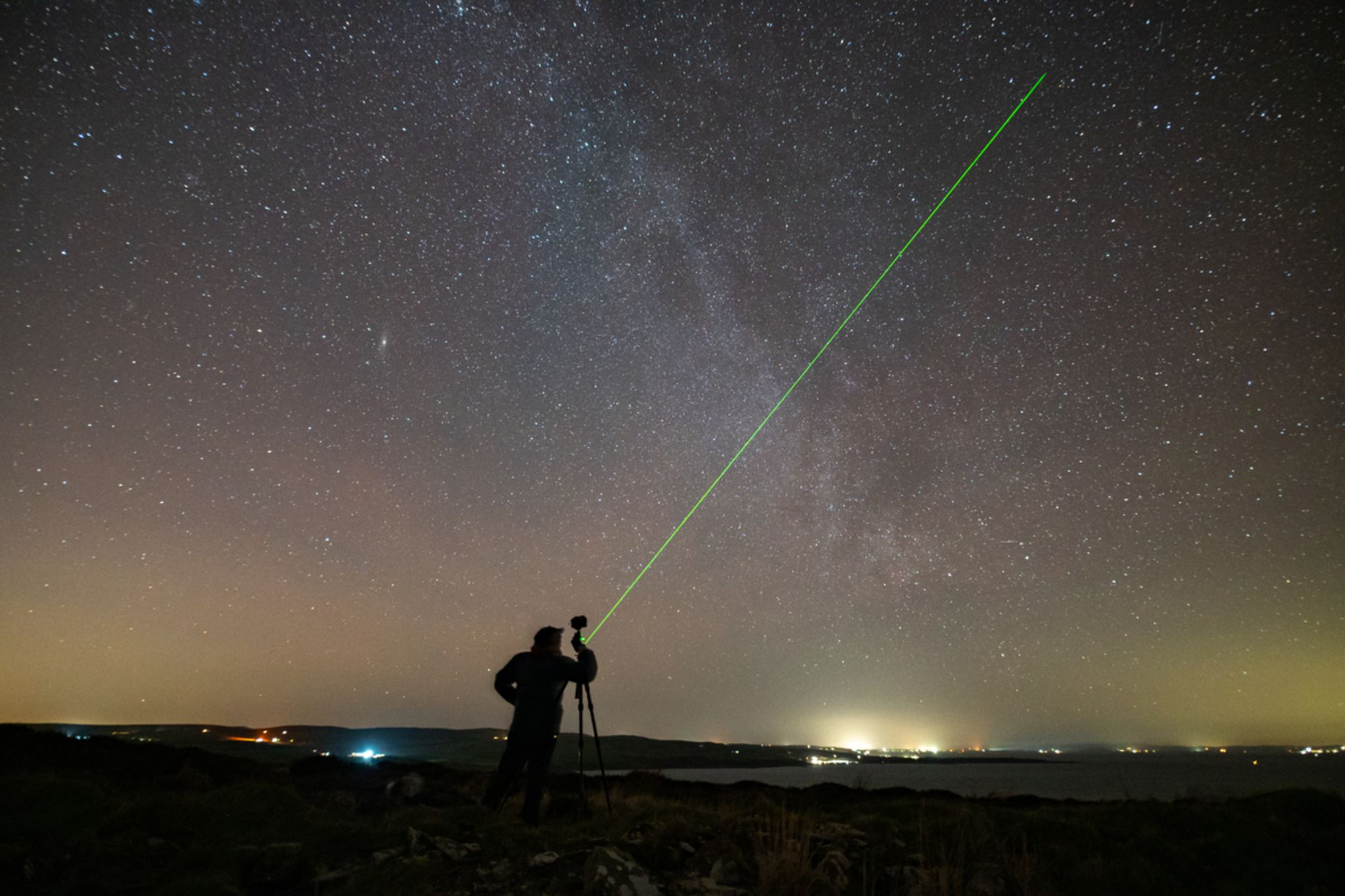
Stargazing in the Mull of Galloway
GET HANDS-ON IN THE BIOSPHERE
The Galloway and Southern Ayrshire UNESCO Biosphere recently celebrated its 10th anniversary and expanded its geographical scope. The Rhins of Galloway were recently included into the biosphere’s new boundary, along with the marine environment. This means more opportunities to work towards developing the region in a sustainable way, taking into consideration the benefits of communities, the environment and the economy.
The biosphere is part of Scotland’s UNESCO Trail, which brings together 13 UNESCO World Heritage Sites into one adventurous trail. At a local level, it has brought together certified businesses and guides, who together create wonderful experiences such as writing retreats, cycling tours, sea-kayaking adventures, and foraging trips. There are some great places to stay in the biosphere too. The Dark Skies Park in the heart of the biosphere is the perfect place to take a night stroll in the company of one of the Dark Sky Rangers and wonder at the Milky Way overhead. If you’re very lucky you might even see the dancing northern lights.
